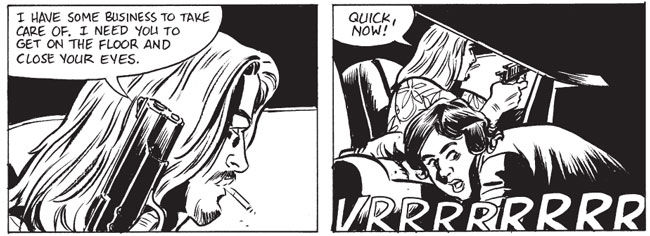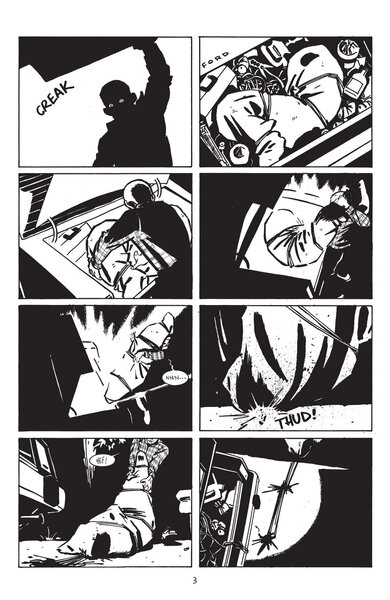Create a free profile to get unlimited access to exclusive videos, sweepstakes, and more!
This Is Dope: Stray Bullets, the best noir comic you're probably not reading

On December 18, one of the best indie comics of all time will release its 91st issue after about a six-month hiatus, following on the heels of a seven-month hiatus between Issues #89 and 90. It will be worth the wait, though. Ask any comics creator who's read it and they're likely to tell you the same thing: Stray Bullets is one of the all-time great pieces of art created in the field.
Stray Bullets, the masterwork of cartoonist David Lapham, debuted as a small press hit in 1995 under Lapham's El Capitan Books banner. The series influenced entire generations of creators to tell stories through the medium and defined what crime comics could be. You won't find it on many bestseller lists — it remains something of a cult hit. Still, it's never too late to try Stray Bullets for the first time.
Each issue more or less stands on its own and forms a vast, sprawling crime saga that spans decades, weaving together a memorable ensemble and dozens of tales. It largely eschews noir archetypes like detectives in trenchcoats and hard-drinking private eyes in favor of remarkably realistic stories and characters. The cast of Stray Bullets is people you've probably known in real life, screwed-up runaway kids and drug dealers and teenagers in love. Each character is rooted in such emotional truth that you can't help but love them despite their flaws — which are plentiful.
There's a meandering nature to Stray Bullets, but one that heightens the book's resonance rather than diminishes it. You won't find a key overarching plot introduced neatly in the first arc of the book. Instead, you'll often follow characters for a little while and then jump to another story, sometimes one taking place parallel to the former and other times years prior or down the road. Eventually paths will cross and stories will tie together, but there's very little sense of urgency throughout the saga, Lapham instead encouraging you to enjoy what's happening on the page you're on at the moment.
The book's publication was largely irregular during its original run, and after #40, which hit stores in 2005, Lapham was forced to put the book on indefinite hiatus in order to focus on more financially viable work. For nearly a decade it remained one of the great tragedies of modern comics, that the run's (presumably) final issue seemed to be doomed never to come out.
That all changed in 2014 when Image Comics made a doozy of an announcement: Not only would it be collecting issues 1-40 in a massive omnibus (the series had largely been out of print before then), but Lapham would finally publish #41 under the Image banner — AND there'd be more.
Later that year, the same day that #41 finally hit stands, the first issue of Stray Bullets: Killers was released. Killers continued the Stray Bullets story and reintroduced some familiar faces to longtime fans (though it functioned perfectly as a standalone tale). It wrapped up after eight issues, at which point the next series, Stray Bullets: Sunshine & Roses, began. It's been going strong since then, save for the aforementioned hiatus.
There's nothing wrong with collaborative comics or ones made via larger publishers, but you haven't really seen what comics can do until you've read Stray Bullets. It's a syringe of adrenaline right into the jugular of the art form. Reading it will remind you why you love comics and push you to try ones that you never thought you'd be interested in. There's nothing like Stray Bullets. It's a shame more people don't know it.



























